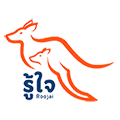HAI LU JYA HE
“With Salesforce a stronger sales team has been established, boosting growth, improving warehouse management, and enhancing customer engagement”


4 x
increased revenue
18 %
increase in orders
3 x
faster order processing
HAI LU JYA HE gets to know its customers better with Salesforce
Since Taiwan-based cutting oil supplier HAI LU JYA HE (HLJH) was founded in 1982, the company has held fast to its three core principles – honesty, creativity and sustainability – as it negotiated the challenges of a tough market. Now with annual revenue close to US$400 million, the company is reaping the rewards of years of forward-thinking innovation.
It has not been an easy journey to success. In 2012, the company partnered with industry-leading Japanese brand Moresco to secure a vital competitive edge in a saturated market, and has developed an innovative waste treatment plant to create an additional revenue stream to complement its cutting-oil business.
“The cutting-oil market is highly fragmented with more than 40,000 manufacturers. As a business model, cutting-oil trading alone can generate only limited revenue and does not allow differentiation from other players in the industry,” says Will Tseng, general manager of HLJH. “Our large-scale treatment plant processes waste cutting oil for use in asphalt pavement production. This has helped us to achieve sustainable economic development.”
Now, Tseng is turning his attention to optimising overall process management and leveraging data insights to customise the customer experience.
“The key is for the entire enterprise to establish a clear workflow instead of the departments operating independently and interchangeably,” he says. “In addition, the company aims to align product promotion objectives and outcomes with customer demand and pain points in order to cope with various environmental changes.”

“By connecting sales and marketing teams with customer data gained through Pardot, we’re able to find and nurture more leads and close more deals.”
Completing the customer journey
Tseng and his team have turned to Salesforce as a key tool for process optimisation with the ultimate goal of improving the customer experience through better segmentation and data-driven customer insights.
At present, HLJH has 2,700 customers in Taiwan. Prior to Salesforce, individual sales representatives retained customer information, which left limited information accessible to the company and exposed HLJH to customer data loss when a sales representative left the organisation.
“Before we introduced Salesforce, interdepartmental communication of customer information and requirements was weak. This caused laborious and time-consuming operations,” says Tseng. “Customers are retained by providing differentiated services. We needed to start by better understanding our customers so that we could deliver proactive service.”
As Taiwanese companies traditionally require sales representatives to be in charge of developing new markets and consolidating services related to repurchase and after-sales, HLJH’s sales department did not have the tools to effectively manage the entire customer journey.
“If any part of this journey is missing, customers will not receive the best service,” says Tseng. “Salesforce is changing that for us. Prior to Salesforce, when customers were first introduced, our team was unable to track major sales opportunities in real time.”
Tseng favours Salesforce for its customisable interface, which he says gives the HLJH the flexibility required to create dynamic solutions.
“It’s like when you receive a new phone,” he says. “The built-in basic module of every handset is the same, but the phone is completely different from the moment you start to use it because you download the apps you want to use. Salesforce is the same for us – it’s a user-friendly system with great flexibility.”
Customer segmentation is the key
Tseng believes that Salesforce’s display panel feature helps the sales team stay on top of current indicators and progress, as well as monitor customers' activity histories and improve customer segmentation.
With data insights received in Salesforce, customers are offered different services depending on their segment. This also allows sales and service personnel to record sales opportunities more clearly. And when the after-sales service team receive a customer complaint, they can understand the entire progression from initial purchase, including how many service cases have been raised in Service Cloud, and can see whether it is the product quality or employee engagement that requires adjustment.
“This complete information on the account provides sales reps with more leverage when supplying quotes and conducting negotiations,” says Tseng. “dashboards from Salesforce show where the company’s KPI indicators are falling too low and how far we are from reaching our goals. We can monitor this information and adjust our sales strategy to propose improvement policies. All teams have access to the same consistent, up-to-date information so that every opportunity result is recorded on every account, in real time.”
The Hai Lu Jya He team are also gaining insights about their customers’ needs and wants through campaigns run on Pardot. The marketing team runs targeted campaigns to both prospects and existing customers, who then benefit from a guided journey to discover more relevant HLJH product content. Subsequent lead scoring based on content consumption helps to better identify areas of interest, and leads are routed to the appropriate sales teams. As explained by Eva Wang, Marketing Specialist “By connecting sales and marketing teams with customer data gained through Pardot, we’re able to find and nurture more leads and close more deals.”
Tseng has also introduced a digital monitoring service that improves on the oil consumption warnings already available in Salesforce. The IoT system installed on the company’s oil barrels can detect pH concentration and oil levels. When the cutting-oil level at the client’s end falls below normal, a message is sent to Salesforce, and a notice is immediately triggered to inform after-sales service staff who then visit the customer’s site for confirmation.
“Customers recognise the company's dedication and are able to see the order forecast for the coming year, monitor purchase volume, and reduce inventory space by 30 to 40 per cent,” says Tseng. “This has increased orders by 18 per cent.”
Closer customer relationships in real time
Tseng also places great importance on staying informed in real time. Instead of apps developed in-house, the company now uses LINE, which comes with a large national user base and has been developed as a portal for customer services and sharing information on contract extension and other topics.
“LINE allows customers to contact the company more directly and customers can provide instant feedback to customer service personnel,” Tseng explains. “In addition, customer information is collected through LINE instead of exchanging business cards or gathering basic information on paper. Funnel screening, conducted in advance by marketing, can classify and precisely identify customers.
“The integration of Salesforce and LINE gives us an instant reflection of customers’ needs and rapidly captures industrial dynamics so we can focus on establishing close customer relationships and engagement to give customers a better user experience.”
This all adds up to some impressive results. Tseng has doubled the number of employees and increased revenue by four fold (4x) in the past six years. Annual customer orders have increased by 6 - 8 per cent, and the time to completion for a new order has been reduced from 21 days to 7 days.
“Salesforce provides a complete 360 degree view of all customer history and engagement. It provides the information employees need to handle and solve customers’ problems, thereby reducing back-and-forth communication and reworking,” says Tseng. “The Salesforce system also enables departments to see each other’s progress on a project with transparency, openness and barrier-free communication.
“Subsequently, a stronger sales team has been established, boosting growth, enhancing existing hardware performance, improving warehouse management and standards, and reducing the production gap and out-of-stock rates. This in turn greatly reduced the cost of operating relative to competitors, and led to market share expansion.”
Keep exploring stories like this one.
Questions? We’ll put you on the right path.
Ask about Salesforce products, pricing, implementation, or anything else — our highly trained reps are standing by, ready to help.







